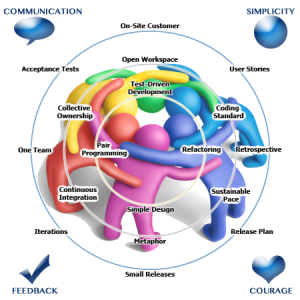 Entry 1 3.22.2015
Entry 1 3.22.2015
I recently was invited to join a project for a Vendor Management Service (VMS) in Mid-March 2015. The project is to provide in Phase 1 a re-factoring of our Client’s code by replacing the hardcoded middleware with services, and adding new client facing features, along with a new UI. All needing new documentation, of which there is now verylittle.
Our client provides a turnkey service for managing IT vendors who need to outsource their HR, Recruiting, Accounting, and Financial Services for this aspect of their business.
My role is to document the present legacy Business Processes, the new Processes, the new Services and the newly re-factored APIs, processes and added features by providing the Requirements, Use Cases, Workflows and Processes.
The leadership on this project is not only setting the pace, but shining a bright light into the future vision for this client, and for the VMS industry. It is a privilege to work with them.
Presently, I am awash in the project ramp-up and assimilation of the many layers, features and infrastructure required to successfully launch a program as complex as this.
We have two teams: one is onsite with FTE EEs of the customer, and a fly-in contingent of our leadership. The other is an offsite team in Atlanta, that is providing an AGILE based component for delivery of the new code which provides the new Service APIs and integration; as well as Leadership, Business Architecure, Process Articulation & Documentation. The client will observe the present SDLC based approach for now.
We have defined the primary users and their roles, the features – both new and old – associated with their roles. The functionality of these features some of which, for now, will remain as legacy, while others are new. There are around 400 of these. Some are Epic, requiring some of the features to support the workflows.
For the new and replacement pieces (in AGILE) we have defined the primary “Day in the Life” from the “need to the ass in the seat” E2E process to establish a critical Happy Path. Variations and UCM will be modeled based upon this primary structure.
The software and coding will be the same, albeit updated. The specific usage of the system will vary based upon the needs and systems of client-users of this system.
The SDLC pieces for things like the DATA, and QA will be driven from the client sites.
I will be updating this log at various points along the way…. so STAY TUNED!!
Bill Fulbright